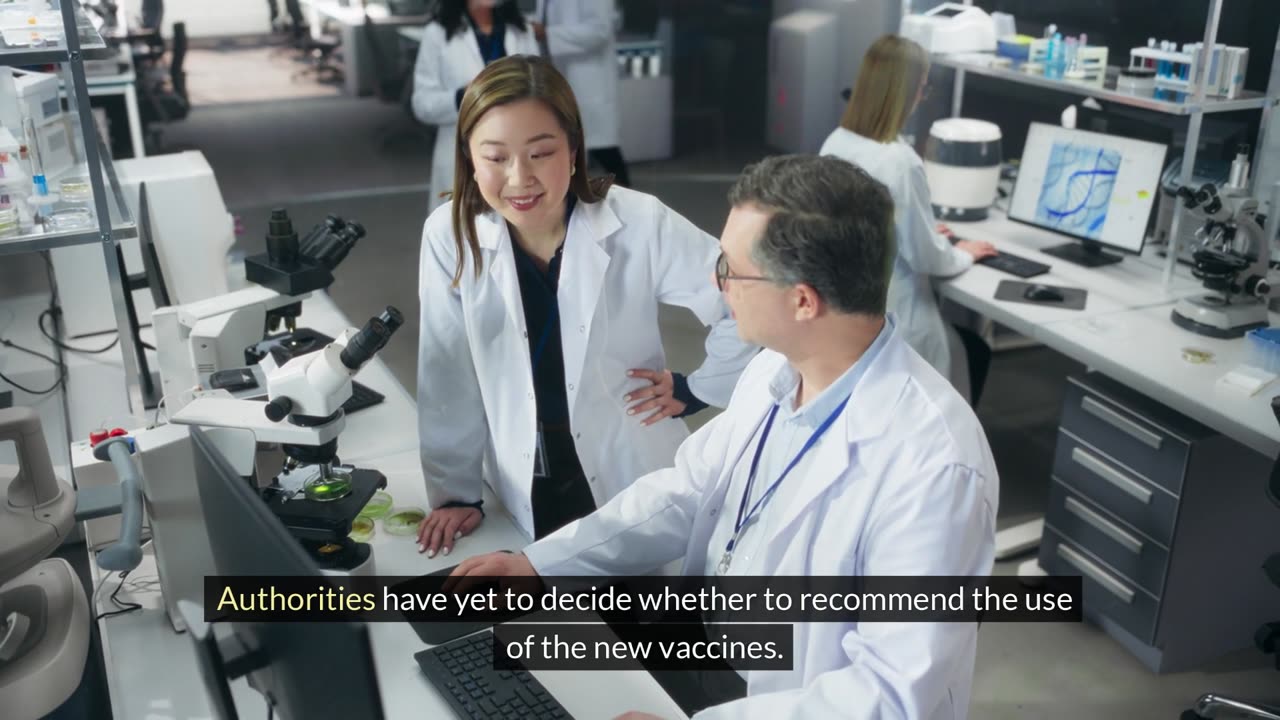Premium Only Content

U.S. Ramps Up Bird Flu Vaccine Production Amid Rising H5N1 Cases
Preparing for the Unseen Threat
In a bid to counter the escalating threat of avian influenza, or H5N1, the United States is accelerating its efforts to produce millions of bird flu vaccine doses this summer. With 4.8 million doses already in the pipeline, officials are mobilizing resources to combat a potential outbreak as the Centers for Disease Control and Prevention (CDC) investigates a growing number of human cases linked to the virus.
The Surge in H5N1 Cases: A Brewing Crisis
An Unprecedented Outbreak in Dairy Cattle
The current H5N1 outbreak is unprecedented, particularly in its impact on dairy cattle. This year's surge in cases has prompted significant concern among health officials and agricultural sectors alike. The highly pathogenic avian influenza virus, traditionally associated with poultry, has shown a worrying ability to infect mammals, including humans. The CDC's investigation into these cases is crucial in understanding the virus's transmission dynamics and mitigating further spread.
Human Infections: A Growing Concern
At least three workers at U.S. dairy farms have tested positive for H5N1 after direct contact with infected cows. The most recent case in Michigan, where the patient developed respiratory symptoms, highlights the potential for more efficient human-to-human transmission. While the CDC maintains that the overall risk to the general public remains low, the situation is fluid and demands vigilance.
The Vaccine Response: Mobilizing Resources
Strategic Preparedness and Response
In response to the growing threat, the federal Administration for Strategic Preparedness and Response (ASPR) has tapped CSL Seqirus to manufacture the bird flu vaccine doses at its North Carolina facility. This initiative is part of a broader strategy to bolster the U.S.'s defenses against a possible influenza pandemic. The production process leverages a scalable method capable of delivering up to 150 million doses within six months of a pandemic declaration.
Vaccine Composition and Production
The vaccines being prepared combine two key components: an antigen targeted at the H5 portion of the H5N1 virus and an adjuvant designed to enhance the immune response. This combination aims to provide robust protection against the virus. However, while production is expected to be completed by late summer, regulatory hurdles must still be cleared before the vaccines can be deployed.
Navigating Regulatory Pathways: The Road to Approval
The FDA's Role
The Food and Drug Administration (FDA) plays a critical role in the approval and authorization of these vaccines. The agency has a history of approving vaccines for potential H5N1 pandemics, including a previous vaccine by Seqirus. The current challenge lies in how swiftly the FDA can evaluate and approve the new doses should a mass vaccination campaign be deemed necessary.
Expert Advisory Panels
A panel of the CDC's outside vaccine advisers is scheduled to convene in June to discuss the H5N1 situation, alongside their routine assessments of seasonal flu vaccines. These discussions will be pivotal in shaping the U.S.'s response strategy, including potential recommendations for vaccination.
Assessing the Risk: Public Health Implications
Current Risk Assessment
Despite the alarming rise in cases, the CDC maintains that the risk to the general public from H5N1 remains low. However, the agency has issued warnings to those in high-risk professions, such as dairy farm and production facility workers, urging them to take precautionary measures. This dual approach aims to protect vulnerable populations while preventing unnecessary panic.
Monitoring and Mitigation
The CDC continues to monitor the situation closely, particularly the latest Michigan case, to detect any mutations in the virus that could increase its transmissibility among humans. While there is no evidence of sustained person-to-person transmission yet, the CDC's vigilance is crucial in preempting any potential shift in the virus's behavior.
Looking Ahead: Preparedness and Precaution
The Importance of Proactive Measures
As the U.S. gears up for a potential public health challenge, the emphasis remains on proactive measures and preparedness. The swift production of vaccine doses and the robust monitoring of H5N1 cases are integral to the country's strategy. Health officials urge the public to stay informed and adhere to recommended safety protocols, especially those working in high-risk environments.
The Role of Public Awareness
Public awareness and cooperation are key components in managing the H5N1 threat. While the CDC's current assessment suggests a low risk for the general population, understanding the signs and symptoms of avian influenza, as well as following health advisories, can significantly reduce the potential for widespread transmission.
Staying Vigilant in Uncertain Times
The U.S.'s response to the rising H5N1 cases underscores the importance of vigilance and preparedness in the face of potential health threats. With millions of vaccine doses being prepared and regulatory pathways being navigated, the country is taking significant steps to protect its population. However, the evolving nature of the virus and the ongoing investigations necessitate a continued focus on monitoring, mitigation, and public cooperation. As the situation unfolds, staying informed and adhering to health guidelines will be crucial in safeguarding public health.
-
 1:21:03
1:21:03
Russell Brand
5 hours agoBREAK BREAD EP. 13 - WESLEY HUFF
149K6 -
 DVR
DVR
Game On!
2 hours agoRoger Goodell is FURIOUS at NFL fans who think Mahomes gets special treatment!
5.89K3 -
 10:31
10:31
Melonie Mac
3 hours agoMy Fantastic Four Movie Trailer Impressions
4.62K8 -
 2:08:22
2:08:22
The Quartering
7 hours ago20,000 Feds QUIT, DOGE Workers Lives At Risk, Trump Vs Dept Of Education, Brie Larson Based & More
95.1K74 -
 1:23:15
1:23:15
vivafrei
20 hours agoLive with Enrique Tarrio! Jan. 6 Lawfare ON STEROIDS! Proud Boys & Beyond!
97.7K40 -
 1:15:01
1:15:01
Savanah Hernandez
3 hours agoEl Salvador offers to take in U.S. prisoners while Elon’s autists take on the deep state
19.7K7 -
 7:12
7:12
Tactical Advisor
6 hours agoBudget 2011 That Uses Glock Mags?! | Fusion Firearms 2025
15.2K1 -
 58:19
58:19
Ben Shapiro
6 hours agoEp. 2131 - Trump and Musk Bring The CHAINSAW
93.8K70 -
 1:12:31
1:12:31
Russell Brand
7 hours agoTrump’s Trade Wars: Power Plays and Global Repercussions – SF531
116K39 -
 29:57
29:57
The Finance Hub
4 hours ago $5.37 earnedBREAKING: DONALD TRUMP JR. JUST DROPPED A MAJOR BOMBSHELL!!!
33.1K21